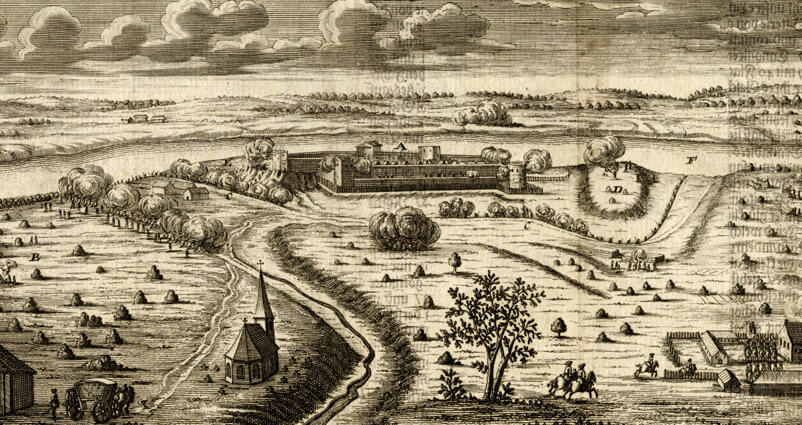History
In the 12th century, on the site of the later castle, there was a stronghold of the Baltic Selonian tribe (“castrum Selonum”). Probably in 1208 it was besieged and surrendered to the crusaders. After the strengthening of Christian power, it was planned to make Selburg the capital of the Bishopric of Selonia, which existed only in the years 1218-1225. This project was not implemented, and the bishopric itself changed its name to the Bishopric of Semigallia in 1225 and was abolished in 1251.
In 1254, the surrounding areas came under the rule of the Teutonic Knights, but the order major investments in Selburg took place only at the turn of the third and fourth quarter of the 14th century, when the older wood and earth fortifications were replaced with stone ones. It was probably also then that the castle was raised to the rank of the seat of the Teutonic vogt, although the first name of this official was recorded only in the years 1422-1423, when a certain Eberhard von Altena held office in Selburg. The main task of the castle was to control trade and shipping safety on the Daugava River and to protect the border with Lithuania and the Archbishopric of Riga.
After the fall of the Livonian branch of the Teutonic Order, power over the castle was taken over by the Duchy of Courland and Semigallia, dependent on the Polish-Lithuanian Commonwealth. The stronghold was then expanded, thanks to which it retained its military importance. During the Polish-Swedish wars in the first half of the 17th century, Selburg often changed hands. The castle ended its operation in 1704. During the Great Northern War, Selburg was blown up by the Swedes and was never rebuilt.
Architecture
The castle was built on a river island, at its highest point. In plan, it had an irregular shape, adapted to the form of the terrain and the earlier wooden and earth ramparts, so it did not refer to the patterns of castles of lower-ranking Teutonic officials, much less to the Teutonic commandry architecture. The complex was probably two-part, with the main part on the western side and the outer bailey on the eastern side. The stone defensive wall was reinforced with at least several towers, located mainly in the corners.
Current state
The relics of the castle are located on a difficult-to-reach island on the Daugava River. They were originally located on a hill, but today, due to the construction of a dam and the raising of the water level on the river in the 1960s, they are visible right next to the shoreline. Significant remains of the castle walls, along with window and gate openings, were still visible at the beginning of the 20th century, but their destruction was caused by artillery fire during World War I.
bibliography:
Borowski T., Miasta, zamki i klasztory. Inflanty, Warszawa 2010.
Herrmann C., Burgen in Livland, Petersberg 2023.



